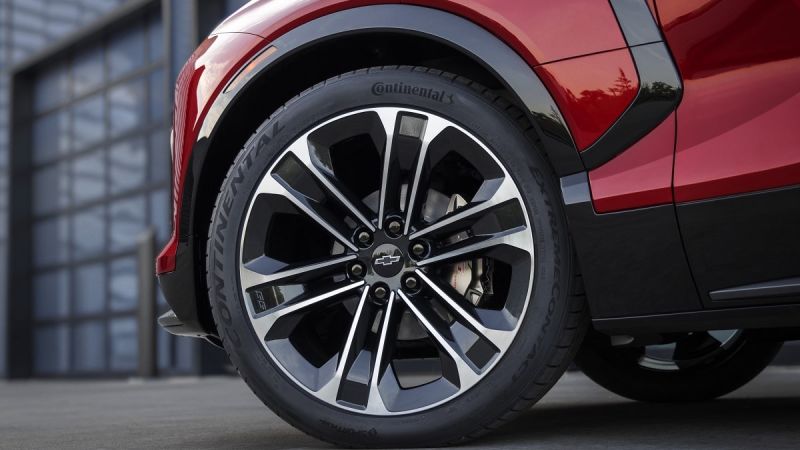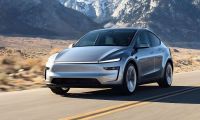One of the many nifty features that battery-electric vehicles offer is one-pedal driving. This is a drive mode that initiates aggressive electricity recapture and slows the vehicle when you move your foot up off the accelerator. Down to go, up to slow. Many EV owners enjoy this feature, and in some cars, like the Chevrolet Bolt EUV, it is even adjustable. There is one potential downside to this feature, though. It can cause braking problems long-term.
Consider this story not FUD (fear, uncertainty, and doubt) but rather a tip based on real-world user knowledge. We’ve seen many posts in social media electric vehicle clubs referring to unexpected brake problems, and the Car Talk Community often has EV owners asking questions related to brake maintenance.
One perfect example we spotted was in the Facebook Chevy Bolt EV and EUV Owners' Club on Facebook posted by Chevy Bolt owner, BB, as we will refer to him. BB posted, “A word to the wise: use your brakes occasionally! I've been driving in L mode for 100,000 miles (2017 Bolt). I now have to replace all four brake calipers because they seize up intermittently. It started with the fronts, and now it's the rears as well.” The general consensus among the over 100 commenters under BB’s post was that they all agreed that using the brakes periodically helps to prevent such problems.
In a recent Car Talk “Ask Ray” inquiry, an electrified vehicle owner asked, “I brought it to my vehicle to my local mechanic for an oil change and whatever else it needed, and he said that electrified vehicles use the motors to brake the car so the rear brakes aren't used enough to keep them adjusted. He said they need to be taken apart, cleaned, and adjusted every two years. Is this true, or am I being scammed?” Of course, it is true, and it is not a scam. Car Talk advised the owner to proceed with the recommended brake service.
What Does Tesla Say About Using Your Brakes?
In the Driving Guide section of Tesla's Model 3 owner's manual, Tesla states, "Note
Because Model 3 uses regenerative braking, the brake pads are typically used less frequently than those in traditional braking systems. To avoid the accumulation of rust and corrosion, Tesla recommends frequently pressing the brake pedal to apply the mechanical brakes and dry the brake pads and rotors."
As evidence that EVs do need some brake TLC now and then, we will point to the Tesla Model 3 owner’s manual section on maintenance, which says, “Clean and lubricate brake calipers every year or 12,500 miles (20,000 km) if in an area where roads are salted during winter.” Tesla goes on to recommend a “Brake fluid health check every four years (replace if necessary).” Tesla says that vehicles that tow, and especially vehicles operated in hot and humid environments, may need more frequent brake fluid checks and replacements.
Areas where the air is salty or where the DPW teams use salt on roads to prevent ice build-up are more prone to frozen calipers. This is true of all vehicles, not just battery-electric vehicles. Mechanics will often recommend to an owner that the brakes be periodically cleaned and the appropriate parts lubricated to help prevent problems.
Brakes move just a smidge when they do their jobs. That movement is beneficial to their long life and proper operation. We recommend that owners of electrified vehicles of any powertrain type who use one-pedal driving as their default should occasionally, perhaps once every time the vehicle is driven, give the brakes a good push when it is safe to do so. In addition, if your vehicle has a manually settable parking brake, use it. Parking brake cables and other components work best and longest when they are actuated regularly.
Related Story: Hidden Benefit - Toyota Hybrids Like Prius Go 100K Before Needing Brakes
Electrified vehicle brake pads and rotors will last longer than brakes have in past conventionally-powered vehicles. The Prius proved this over three generations. However, those parts are the most affordable components. Calipers are much pricier, and using your brakes regularly and with some gusto will help to ensure that your vehicle’s brakes work as long as practical without any needed repairs. One last reminder: Change your brake fluid according to your vehicle manufacturer's recommendations.
Image of 2024 Blazer EV front brakes courtesy of Chevrolet.
John Goreham is an experienced New England Motor Press Association member and expert vehicle tester. John completed an engineering program with a focus on electric vehicles, followed by two decades of work in high-tech, biopharma, and the automotive supply chain before becoming a news contributor. In addition to his eleven years of work at Torque News, John has published thousands of articles and reviews at American news outlets. He is known for offering unfiltered opinions on vehicle topics. You can follow John on Twitter, and connect with him at Linkedin.












